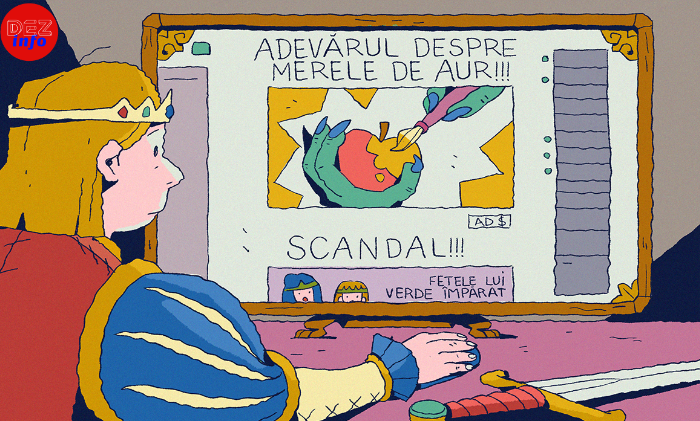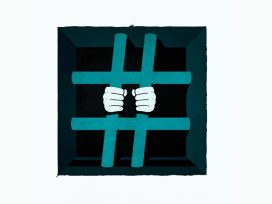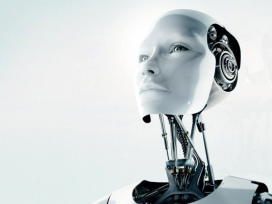It all started with a story. If I were to go back in time, mine was one with ‘Indians’ and Westmen and it was penned by Karl May. Many years later, I was to find out that the man who wrote Winnetou and Old Shatterhand had never actually been to the United States of America. He had only seen the Texan Llano Estacado on a map, where the Great American Desert was just a yellow blob.
He had never ridden on horseback under the starry prairie skies. He had never seen a cowboy. A greenhorn either. He had never said ‘Howgh!’ He had never hunted a grizzly bear and had never shot a Hunter rifle. He’d met no Apaches.
That is to say, what I had read breathlessly for months on end – stories of the Apache roan steed Hatatitla, of the brave and righteous Old Shatterhand, of inn-keeper Mamma Thick, of Indian Colma Pushi, who was a woman under the guise of a man, of Dick Hammerdull and old raccoon Pitt Holbers – all these luminous, lively creatures who inhabited my childhood and made my heart trepidate with emotions were truly and definitively imaginary. Does all this make them less real to me?
Unspoken truths
I started pondering this with increasing seriousness in the early 2010s, when the Romanian corner of the internet was first touched by those fabulous websites containing ‘the unspoken truth about…’. A long list follows here, like a sort of table of contents: the truth about our Dacian ancestors, the ‘hidden’ meanings of the Fibonacci sequence, sacred geometry and the CIA, the Bible, reptilians and homeopathy. Then, history in general. The ‘unspoken’ truth about politics, math, astronomy and astrology.
I remember that aside from reading them with fascination – and I did have my fair share of nights spent learning ‘truths’ impossible to verify from other sources – I always found it amazing that no reader in the vast comment sections was asking the author the one question that, in my mind, should’ve been on everyone’s lips: how do you know?
No one asked or asked themselves this simple clarifying question: how does the author know all these things? How do they know the way to decalcify your pineal gland and what was behind the 1908 twelve-megaton explosion in Tunguska, Siberia? How do they know that Angela Merkel is Hitler’s illegitimate daughter and that Nikola Tesla created an inexhaustible energy source?
The readers, the people, were happy to read the revelations and leave it at that. They weren’t trying to confront them with historic data, other scientific studies, or at least with laws of physics and elementary mathematical calculations. They took them to be true. In one amusing case, a rather popular section of one such website was titled ‘fulfilled conspiracies’.

Illustration by Ioana Șopov for Scena9.
In a way, it sounds like what some of our parents – or even some university professors – are saying today, whenever we caution them that they might have believed or amplified on social media an alleged piece of information that’s insufficiently grounded in or adhering to reality. Yes, but it might turn out to be true.
Or, the way I first heard it, back when I was a fresh reporter, on my way to change the world from the ground up: we’re not going to let reality ruin a perfectly good story. The original phrase can be found in a philosophic treatise on poetry and eros written by Giordano Bruno: se non è vero, è molto ben trovato! (‘If it is not true, it is very well found/invented!’). What did the Renaissance philosopher mean by this in the 1580s, when he published his treatise?
Without ever having met an advertising creative with Cannes awards to their name, a zealous political campaign head, or even a ubiquitous marketer, Bruno showed that, sometimes, the truth of a story matters less than how it lines up with the audiences’ beliefs and desires.
On how imagination works
A 2007 three-episode segment of the cartoon series South Park explores the porousness of the delicate membrane that separates what we assess as real from the imaginary. Also, the subtle relationship between the beings (or ideas) that populate our imagination and, once they descend from there, our reality.
Here’s the simple story: a few terrorists attack our imagination and tear down the wall that separates the good and luminous characters from the dark and evil ones in our imagination. Consequently, imagination starts to get out of hand.
You are probably asking yourselves why I so quickly switched from Giordano Bruno to South Park. Because they are, in fact, connected.
Everything that we’ve been filing under the generous (and malignant) catch-all phrase ‘fake news’ over the past years refers to this type of action, which directly targets our imagination and attempts to overwrite it, modifying its very anchors and what grounds it into what we take as reality: the stories and truths we share. In their stead, it places lies and distortions. And there’s something else that gets thrown into the mix here.
Facebook & social networks
Last February, when former party leader and Prime Minister Dacian Cioloș announced he was leaving his party, USR, several friends sent me screenshots of their phones or laptops documenting a mini poisoning campaign, launched by several publicly unclaimed Facebook pages.
The goal of these pages was to amplify the negative side of the story as much as possible, by paying Facebook to insert their press materials into our news feeds. Meaning that, whether you like it or not, Facebook will show you this political content, with a fine print ‘sponsored’ disclaimer, which should let all the users know that what they’re seeing is a paid boosted post, similar to ads in traditional newspapers.
For the few thousand euros those pages invested, the negative articles will reach millions of people over several days. Without any claim to scientific accuracy, I would estimate that the vast majority of them haven’t got the slightest idea that they’re looking at a premeditated operation, concealed under the guise of apparent reality.
The effect is that the audience perceives this artificial amplification as organic – that is to say, natural. They don’t see beyond the smokescreen. It’s just one of the countless ways in which social networks make life easier for those trying to manipulate us or instil in us ideas that wouldn’t have reached us otherwise. Also involved here are the algorithms that govern the major platforms, of which we know next to nothing. And what we do know is enough to send shivers down our spines.
Of everything I’ve read on the influence of algorithms, the best starting point for a debate is an analysis published in Wired as early as 2018. That’s because the analyst behind it, Renée DiResta, makes a proposal that would solve the sensitive issue of freedom of speech – the shield platforms put up each time fingers are pointed at them for providing a soapbox that increases the reach of malignant discourse. And that proposal is: freedom of speech is not the same as freedom of reach.
Questions to ask
Over the past years, I began discovering (and covering) the ways in which we’re being manipulated and influenced in the virtual medium. I’ve reported on how fakes and disinformation reach our minds, pushed and helped by social networks and their diffuse regulations. And, on the (let’s acknowledge it) hybrid war we’re in. One that is striking accurate blows to our increasingly prominent inability to discern between reality and fiction.
Scena9 has extended an invitation for me to curate a series of articles which will explore how our perception can be distorted, controlled, or even carefully guided towards acting IRL (in real life). Because the problem with all these fakes and lies is that, through repetition and amplification, they become real ‘alternative’ facts. ‘Alternative’ reality.
In the above, I tried to sketch how I’ve come to perceive the internet nowadays: a virtual space where various entities sow the seeds of future realities and, consequently, of future conflicts. And I consume it – we’ve all become content-consuming users – with this caveat of constantly asking myself: ‘Who does this serve? How is this content perceived by various audiences? What emotions does it appeal to? What new “enemy” to hate does this content propose? Am I looking at a primary source? Is there a primary source for this information? Am I reading an opinion piece or a factual account? Who’s paying for me to see this content?’
As such, we’re making you an offer to explore and discover; that is, to play, starting from these premises. However, there’s nothing playful about our choice of timing. Early in 2021, we watched in stupefaction as Donald Trump’s supporters stormed the Capitol building in Washington DC. Thousands of people, radicalized through lies and disinformation, tried to overturn the results of democratic elections, in the name of democracy.
Shortly after the beginning of 2022, Ukraine’s invasion by Russia, propagandistically branded by the Kremlin as a ‘special denazification operation’, proved once again that the wave of fakes and disinformation is coming at us like the mace of the fairytale dragon. It heralds violence. So, alongside reporters, experts, and journalists, we’ve set out to explore virtual space and uncover the breaches through which fakes and disinformation weasel themselves in and arrive before our eyes – but especially penetrate our minds.
And, ultimately, perhaps we’ll be able to come up with clearer answers to questions that seem settled, yet periodically boomerang back, catch us unawares, and smack us upside the head. Just like reality.
This article originally appeared in Scena9 both in Romanian and English, in June and September 2022, respectively. Scena9 has an English section titled ‘English, please’.
DEZinfo is an editorial project partly funded through a grant from the US State Department. The opinions, findings, and conclusions presented in this material belong to the author and do not necessarily reflect those of the United States State Department.







